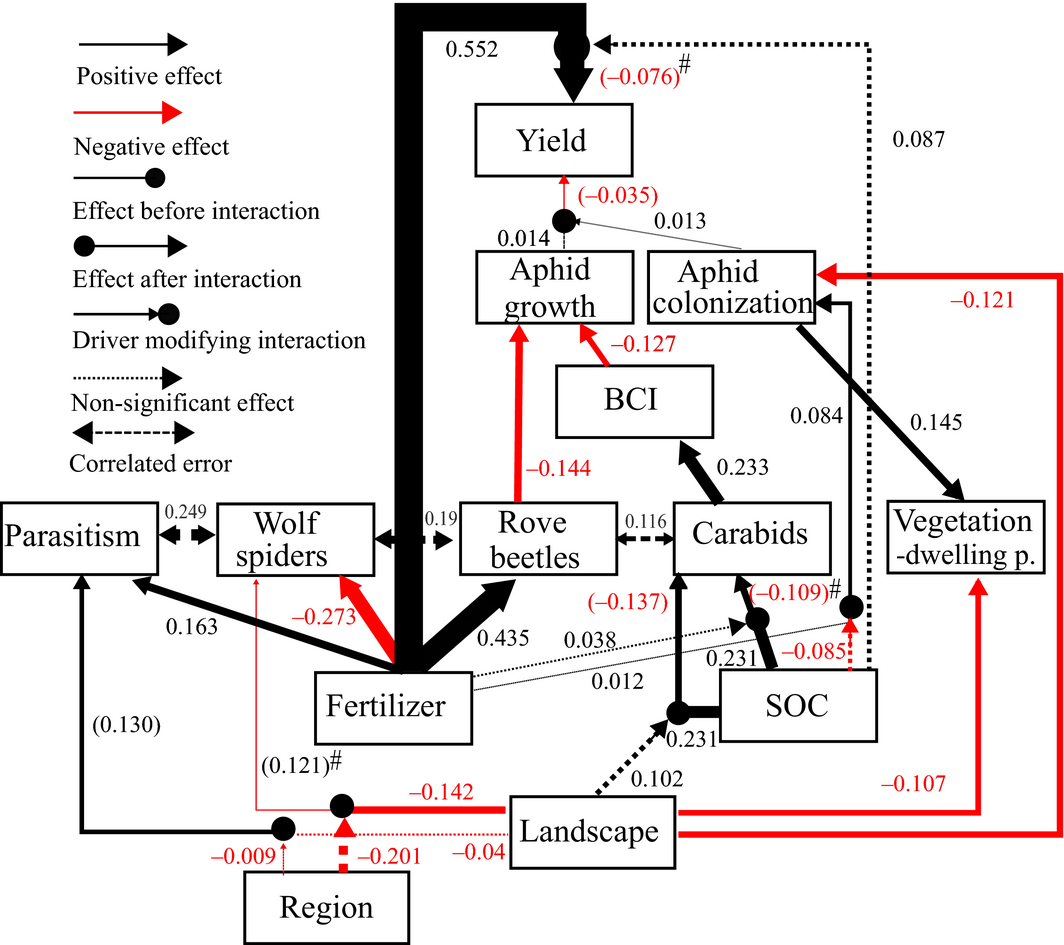Gagic, V., Kleijn, D., Báldi, A., Boros, G., Jørgensen, H. B., Elek, Z., Garratt, M. P. D., de Groot, G. A., Hedlund, K., Kovács-Hostyánszki, A., Marini, L., Martin, E., Pevere, I., Potts, S. G., Redlich, S., Senapathi, D., Steffan-Dewenter, I., Świtek, S., Smith, H. G., Takács, V., Tryjanowski, P., van der Putten, W. H., van Gils, S. and Bommarco, R. 2017, Combined effects of agrochemicals and ecosystem services on crop yield across Europe. Ecology Letters. doi:10.1111/ele.12850.
Simultaneously enhancing ecosystem services provided by biodiversity below and above ground is recommended to reduce dependence on chemical pesticides and mineral fertilisers in agriculture. However, consequences for crop yield have been poorly evaluated. Above ground, increased landscape complexity is assumed to enhance biological pest control, whereas below ground, soil organic carbon is a proxy for several yield-supporting services. In a field experiment replicated in 114 fields across Europe, we found that fertilisation had the strongest positive effect on yield, but hindered simultaneous harnessing of below- and above-ground ecosystem services. We furthermore show that enhancing natural enemies and pest control through increasing landscape complexity can prove disappointing in fields with low soil services or in intensively cropped regions. Thus, understanding ecological interdependences between land use, ecosystem services and yield is necessary to promote more environmentally friendly farming by identifying situations where ecosystem services are maximised and agrochemical inputs can be reduced.

Fig.2 Biological control structural equation model (SEM) showing direct and indirect effects of soil organic carbon (SOC), fertilisation (presence/absence), landscape and regional simplification (calculated as percentage arable land) on aphids, their natural enemies, biological pest control (BCI) and yield. Thickness of paths is proportional to the given z-standardised path coefficients, including the adjusted effects after interactions for one of two variables. Non-significant paths are shown only when involved in a significant interaction. The numbers in parentheses show interaction coefficients. The hash symbol (#) marks interactions where significance differed with different standardisation methods (see Table S1 in Appendix S3). ‘Vegetation-dwelling p.’ is for vegetation-dwelling predators.